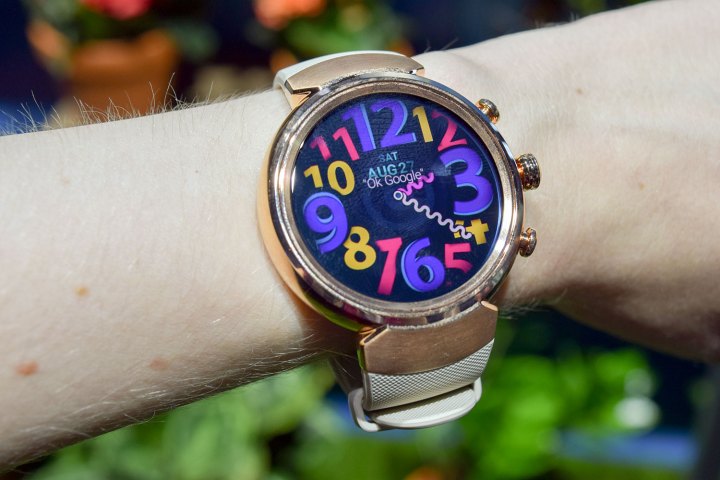
Asus launched the first ZenWatch, which runs Google’s Android Wear operating system, in 2014. The newest — the ZenWatch 3 — debuted in 2016, and is the first in the series to feature a Qualcomm’s Snapdragon Wear 2100 processor and a circular, Corning Gorilla Glass-shielded AMOLED display (400 x 400 pixels). It’s IP67 resistant against water and dust; features three programmable buttons on the right that can assigned to particular apps; and lasts about one to two days on battery. And it charges quickly, thanks to Asus’ HyperCharge technology — up to 60 percent in 15 minutes.
It wasn’t enough to motivate sales, apparently. According to Digitimes, sales of the ZenWatch family totaled 5,000-6,000 units a month, on average, compared to the 3.5 million Apple Watch units that Apple shipped in the first quarter of 2017.
The ZenWatch isn’t the first smartwatch that’s fallen victim to Apple’s wearable juggernaut.
According to a Canalys analysis, Apple Watch dominated sales in 2016, taking nearly three times as much market share as its nearest competitor. Shipments reached an estimated 9 million units — a record — and accounted for more than 80 percent of the market’s total smartwatch revenue. For 2016 on the whole, Canalys estimates that Apple Watch sales accounted for 17 percent of the market, trailed by Samsung at 15 percent.
It’s a stranglehold that’s discouraged other smartwatch makers from pursuing the market more aggressively.
In December 2016, Motorola told The Verge that it wouldn’t release a new Moto smartwatch in time for the next major version of Android Wear, Android Wear 2.0. Shakil Barkat, head of global product development at Moto, said that the company didn’t “see enough pull in the market” to launch a new smartwatch. And in May 2016, Jawbone fully ended production on its line of fitness trackers and sold remaining inventory to a third-party reseller.
In October 2016, meanwhile, Microsoft stopped selling its Band 2 fitness tracker and removed all references to Band devices from its website. It subsequently rechristened its existing activity-tracking Health app as Microsoft Band, potentially to pave the way for new, non-Band-dependent Health apps that work with its Health service.
In other cases, the Apple Watch has been the downfall of wearable startups.
Fossil Group acquired Misfit, maker of wearable activity trackers like the Shine 2, for $260 million in November 2015. And in December 2016, Fitbit acquired smartwatch maker Pebble’s “key personnel and intellectual property related to software and firmware development” — reportedly to jump-start development of a new Blaze smartwatch.



